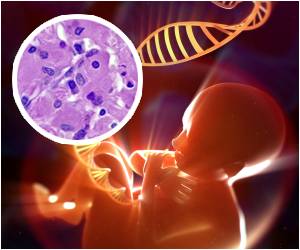Sranford study says human embryonic stem cells derived from excess IVF embryos may help scientists unlock the mysteries of infertility for other couples struggling to conceive
New research from the Stanford University School of Medicine has revealed that human embryonic stem cells derived from excess IVF embryos may help scientists unlock the mysteries of infertility for couples struggling to conceive
Researchers at the school have devised a way to efficiently coax the cells to become human germ cells — the precursors of egg and sperm cells — in the laboratory. Unlike previous research, which yielded primarily immature germ cells, the cells in this most-recent study functioned well enough to generate sperm cells."Ten to 15 percent of couples are infertile," said senior author Renee Reijo Pera, PhD. "About half of these cases are due to an inability to make eggs or sperm. And yet deleting or increasing the expression of genes in the womb to understand why is both impossible and unethical. Figuring out the genetic 'recipe' needed to develop human germ cells in the laboratory will give us the tools we need to trace what's going wrong for these people." Reijo Pera is a professor of obstetrics and gynecology at the medical school and the director of Stanford's Center for Human Embryonic Stem Cell Research and Education. The study will be published online by Nature on Oct. 28.
Previous efforts to study infertility have been hampered by the fact that — unlike many other biological processes — the human reproductive cycle cannot be adequately studied in animal models. And because germ cells begin to form very early in embryonic development (by eight to 10 weeks), there's been a dearth of human material to work with. "Humans have a unique reproductive system," Reijo Pera said. "Until now we've relied on studies in mice to understand human germ cell differentiation, but the reproductive genes are not the same. This is the first evidence that you can create functional human germ cells in a laboratory."
The scientists built on previous research in the mid-1990s by Reijo Pera that identified a number of genes involved in male infertility. Members of what's called the DAZ family, the genes are unusual in that they encode RNA-binding proteins rather than the DNA transcription factors more commonly known to regulate cellular events.
In the current study, the researchers treated human embryonic stem cells with proteins known to stimulate germ cell formation and isolated those that began to express germ-cell-specific genes — about 5 percent of the total. In addition to expressing key genes, these cells also began to remove modifications, or methyl groups, to their DNA that confer cell-specific traits that would interfere with their ability to function as germ cells. Such epigenetic reprogramming is a hallmark of germ cell formation.
They then used a technique called RNA silencing to examine how blocking the expression of each of three DAZ family members in the embryonic stem cells affected germ cell development. Conversely, they also investigated what happened when these genes were overexpressed.
They found that one family member, DAZL, functions very early in germ cell development, while two others, DAZ1 and BOULE, stimulate the then-mature germ cells to divide to form gametes. Overexpressing the three proteins together allowed the researchers to generate haploid cells — those with only one copy of each chromosome — expressing proteins found in mature sperm. (When a sperm and an egg join, the resulting fertilized egg again has two copies of each chromosome.) When treated in this manner, about 2 percent of the differentiated human embryonic stem cells were haploid after 14 days of differentiation.
The effect of the DAZ family members on the embryonic stem cells varied according to whether the cells were derived from a male or a female embryo. Overexpression of BOULE increased the relative proportion of putative germ cells from 2 to 12 percent in female, but not male, cell lines. This suggests that BOULE may play a larger role than the other proteins in the development of female germ cells.
The researchers plan to use a similar strategy to optimize the production of eggs from embryonic stem cells, as well as investigating whether reprogrammed adult cells called induced pluripotent cells, or iPS cells, can also be used to create germ cells. By charting the milestones of gamete development, they hope to identify potential problems that would lead to infertility or fetal disability.
"Although most of our birth defects are caused by problems in the development of eggs or sperm," said Reijo Pera, "it's not clear why there are so many errors. This research gives us a system we can use to compare errors in the germ line vs. somatic cells. For instance, we can now begin to directly investigate the effects of environmental toxins on germ cell differentiation and gamete development. We've already seen that, even in a dish, germ cells appear to be more sensitive to these compounds."
Source-Eurekalert
RAS















